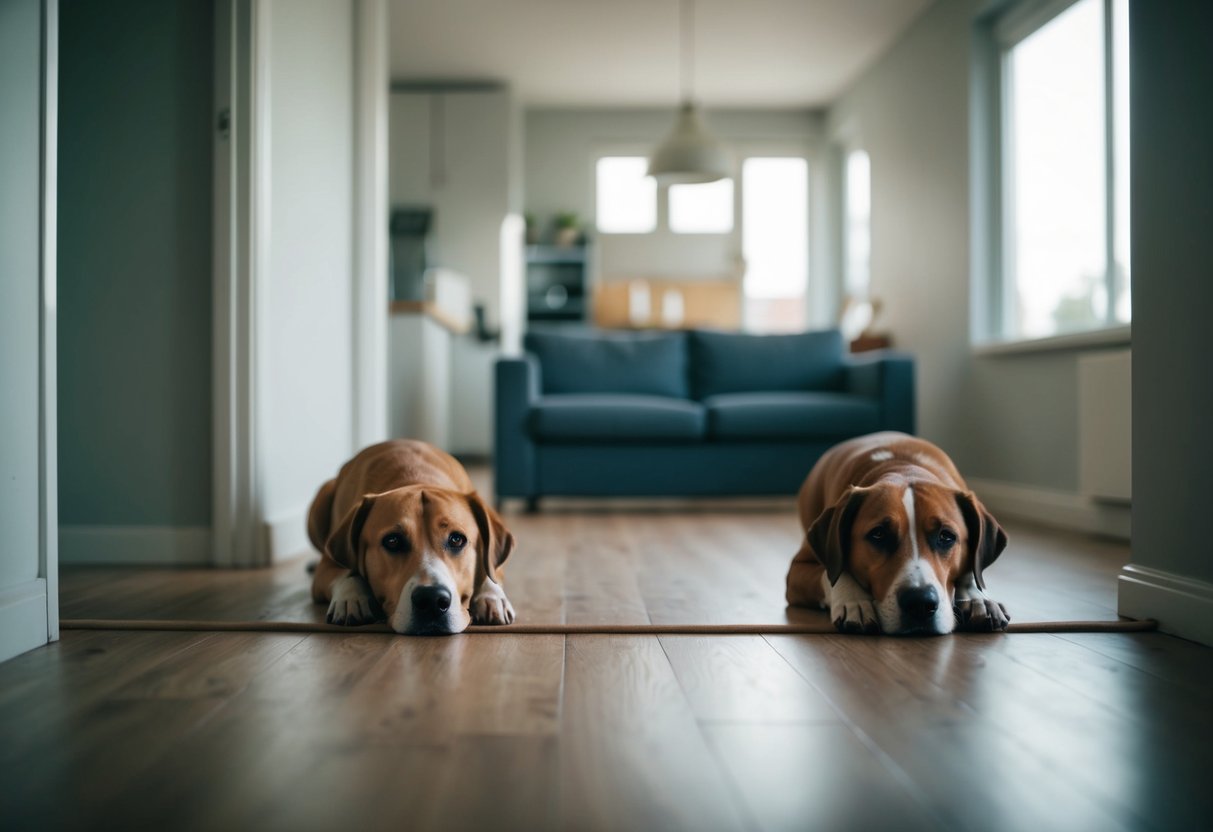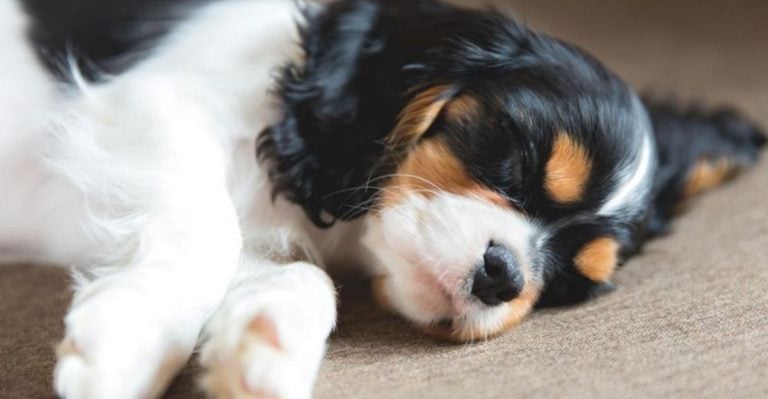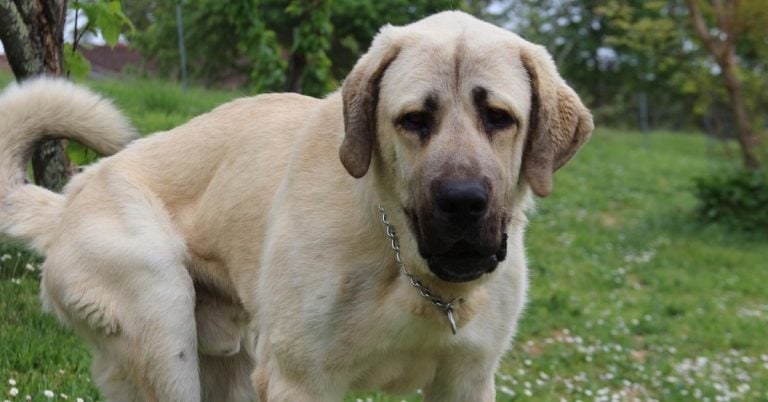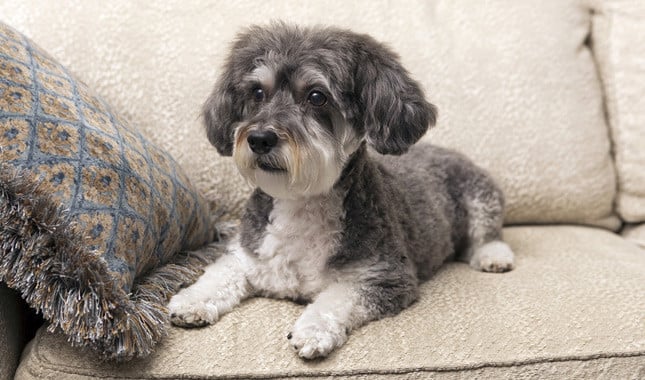20 Worst Dog Breeds for Long Work Hours: Canines That Need More Attention

Choosing the right dog breed is crucial for pet owners with demanding work schedules.
Long hours away from home can significantly impact a dog’s well-being and behavior. Some breeds are better suited to handle extended periods alone than others.
Dog breeds that struggle with long work hours often require more attention, exercise, and companionship throughout the day.
Understanding which breeds may face challenges in this situation can help potential dog owners make informed decisions.
This article explores 20 dog breeds that typically do not thrive when left alone for extended periods due to work commitments.
1. Afghan Hound

Afghan Hounds are elegant and beautiful dogs, but they’re not well-suited for long work hours. These independent-minded canines require significant attention and exercise to thrive.
Afghan Hounds have high energy levels and need regular physical activity. Without proper outlets for their energy, they may become restless or destructive when left alone for extended periods.
Their long, silky coats demand frequent grooming and maintenance. This time-consuming task can be challenging for busy owners who spend many hours away from home.
Afghan Hounds are known for their strong-willed nature and can be difficult to train. They may not respond well to being left alone for long stretches, potentially leading to separation anxiety or behavioral issues.
These dogs also have a strong prey drive, which can make them prone to chasing small animals. This instinct requires careful management and supervision, which may be difficult for owners with demanding work schedules.
2. Basset Hound

Basset Hounds are not well-suited for long work hours due to their temperament and needs. These dogs are known for their laid-back nature and love of companionship.
Basset Hounds require regular attention and can become destructive if left alone for extended periods. Their strong sense of smell may lead them to follow scents, potentially causing mischief in the home.
These dogs are prone to separation anxiety, which can result in excessive barking or howling when left alone. Basset Hounds also have a tendency to become overweight without proper exercise and supervision.
Their short legs and long bodies make them less active than some other breeds, but they still need daily walks and playtime. Owners with long work hours may find it challenging to meet the Basset Hound’s exercise and companionship needs.
3. Bulldog

Bulldogs are known for their stocky build and adorable wrinkled faces. Despite their charming appearance, they may not be the best choice for owners with long work hours.
These dogs are prone to separation anxiety and can become destructive when left alone for extended periods. Bulldogs thrive on human companionship and require frequent attention and interaction.
Their brachycephalic (flat-faced) features make them susceptible to breathing difficulties and overheating. This means they need close monitoring, especially during warm weather or physical activity.
Bulldogs also have specific grooming needs due to their facial wrinkles and skin folds. Regular cleaning is necessary to prevent infections and skin irritations.
Without proper care and attention, Bulldogs may develop behavioral issues or health problems. Owners with demanding work schedules might find it challenging to meet the unique needs of this breed.
4. Chow Chow

Chow Chows are not ideal for owners with long work hours. These dogs require significant attention and companionship throughout the day. They can become anxious or destructive when left alone for extended periods.
Chow Chows are known for their independent nature and strong-willed personality. Without proper socialization and consistent training, they may develop behavioral issues. This breed needs regular exercise and mental stimulation to stay healthy and content.
Chow Chows are prone to separation anxiety, which can lead to excessive barking, chewing, or other destructive behaviors. Their thick double coat also requires frequent grooming, adding to the time commitment needed for this breed.
For individuals working long hours, a Chow Chow may not be the best choice. These dogs thrive on human interaction and may struggle with prolonged periods of solitude.
5. Dachshund

Dachshunds are not ideal for owners with long work hours. These small, elongated dogs thrive on companionship and attention from their humans.
Left alone for extended periods, Dachshunds can become anxious and destructive. They may engage in excessive barking or digging behaviors when bored or lonely.
Dachshunds are prone to separation anxiety, which can lead to stress-related health issues. Their long backs make them susceptible to intervertebral disc disease, exacerbated by inactivity during prolonged absences.
These dogs require regular exercise and mental stimulation. Without proper outlets for their energy, Dachshunds may develop behavioral problems or become overweight.
Frequent potty breaks are necessary for Dachshunds, making them ill-suited for owners who cannot provide consistent bathroom access throughout the day.
6. Mastiff

Mastiffs are gentle giants known for their loyalty and calm demeanor. These large dogs require ample space and can struggle with long work hours due to their need for human companionship.
Mastiffs are prone to separation anxiety when left alone for extended periods. Their size and strength can lead to destructive behavior if they become bored or anxious during long absences.
These dogs have moderate exercise needs but thrive on regular interaction with their families. Mastiffs may develop health issues if not given proper attention and care throughout the day.
Their drooling tendencies can create messes when owners are away for long hours. Mastiffs also benefit from consistent training and socialization, which can be challenging with limited time at home.
7. Saint Bernard

Saint Bernards are gentle giants known for their loving nature and impressive size. These large dogs require ample space and attention, making them challenging for owners with long work hours.
Saint Bernards thrive on human companionship and can become anxious when left alone for extended periods. Their size and strength necessitate regular exercise and training, which may be difficult to provide with a demanding work schedule.
These dogs are prone to drooling and shedding, requiring frequent grooming and cleaning. Without proper care and attention, Saint Bernards may develop destructive behaviors or health issues.
Their massive size also means they consume more food and require larger living spaces. This can be costly and impractical for those who work long hours and have limited time at home.
8. Great Dane

Great Danes are gentle giants known for their imposing size and loving nature. Despite their calm demeanor, these large dogs are not well-suited for long work hours.
Great Danes require regular exercise and human interaction to maintain their physical and mental well-being. Extended periods of solitude can lead to boredom and anxiety in these social creatures.
Their massive size also means they need frequent bathroom breaks, which can be challenging for owners working long shifts. Great Danes are prone to health issues like bloat, making regular monitoring essential.
These dogs thrive on companionship and may become destructive if left alone for extended periods. Their powerful tails can inadvertently cause damage in confined spaces.
While Great Danes are loving and loyal, their need for attention and care makes them less than ideal for owners with demanding work schedules.
9. Borzoi

Borzois are elegant sighthounds known for their independent nature. These graceful dogs thrive on human companionship and can become anxious when left alone for extended periods.
Borzois require regular exercise and mental stimulation to stay content. Their large size and high energy levels make them unsuitable for small living spaces or sedentary lifestyles.
These dogs have a strong prey drive and may not be ideal for homes with small pets. Borzois also need consistent grooming due to their long, silky coats.
While intelligent, Borzois can be stubborn and challenging to train. They may not respond well to long periods of isolation during work hours, potentially leading to destructive behaviors.
10. Shar Pei

Shar Peis require significant attention and companionship, making them less suitable for owners with long work hours. These wrinkly-faced dogs are known for their loyalty and attachment to their families.
Left alone for extended periods, Shar Peis may become anxious or destructive. They thrive on human interaction and can develop behavioral issues without adequate socialization.
Shar Peis have specific grooming needs due to their unique coat and skin folds. Regular cleaning and maintenance are essential to prevent skin infections, which may be challenging for busy owners.
These dogs also tend to be stubborn and independent, requiring consistent training and attention. Without proper guidance, they may develop unwanted behaviors that are difficult to correct later.
Shar Peis are prone to certain health issues that may require frequent veterinary visits. This can be problematic for owners who spend long hours away from home.
11. Shih Tzu

Shih Tzus are affectionate companions, but they struggle with long work hours. These small dogs thrive on human interaction and can become anxious when left alone for extended periods.
Shih Tzus are prone to separation anxiety, which may lead to destructive behaviors or excessive barking when their owners are away. Their long, silky coats require daily grooming, which can be challenging for busy professionals.
These dogs have a stubborn streak, making house training difficult. Owners working long hours may find it hard to maintain consistent training routines. Shih Tzus also need regular exercise and mental stimulation to stay healthy and happy.
Their small bladders necessitate frequent bathroom breaks, which can be problematic for those with demanding work schedules. Without proper attention, Shih Tzus may develop behavioral issues or health problems.
12. Beagle

Beagles are known for their friendly and energetic nature, but they can struggle with long work hours. These dogs have a strong pack mentality and thrive on companionship.
When left alone for extended periods, Beagles may become anxious or destructive. Their hunting instincts can lead them to seek stimulation through excessive barking or digging.
Beagles require regular exercise and mental stimulation to stay happy and healthy. Without proper attention, they may develop behavioral issues or become overweight due to inactivity.
These dogs are also prone to separation anxiety, which can manifest in destructive behaviors or excessive vocalization. Their howling can be disruptive to neighbors, especially in apartments or close living spaces.
Beagles need consistent training and socialization to manage their independent streak. This can be challenging for owners with demanding work schedules and limited time at home.
13. Basset Griffon Vendéen

The Basset Griffon Vendéen is a lively and energetic breed that thrives on companionship. These dogs can struggle when left alone for extended periods, making them less suitable for owners with long work hours.
Basset Griffon Vendéens have a strong hunting instinct and require regular physical and mental stimulation. Without proper exercise and attention, they may become bored and destructive, potentially causing damage to furniture or personal belongings.
These dogs are known for their vocal nature and may bark excessively when left alone. This behavior can be disruptive to neighbors, especially in apartment settings.
Basset Griffon Vendéens form strong bonds with their families and can experience separation anxiety when left alone for long periods. This can lead to stress-related behaviors and negatively impact their well-being.
14. Lhasa Apso

Lhasa Apsos are independent and strong-willed dogs that can struggle with long periods of solitude. These small Tibetan breeds have a history of being watchdogs, making them prone to excessive barking when left alone.
Lhasa Apsos thrive on companionship and may develop separation anxiety if left for extended periods. Their long, luxurious coats require regular grooming, which can be challenging for owners with demanding work schedules.
These dogs are intelligent but can be stubborn, making training more difficult without consistent attention. They may become bored and destructive if not provided with adequate mental stimulation throughout the day.
Lhasa Apsos are better suited for households where someone is frequently home or where their owners can dedicate ample time to their care and companionship outside of work hours.
15. Cavalier King Charles Spaniel

Cavalier King Charles Spaniels are affectionate and gentle companions. These dogs thrive on human interaction and form strong bonds with their owners.
Cavaliers can experience separation anxiety when left alone for extended periods. They may become distressed, leading to excessive barking or destructive behavior.
These dogs are not well-suited for homes where they will be left alone for long work hours. Their need for constant companionship makes them better suited for households with someone present most of the day.
Cavaliers require regular attention and exercise to maintain their physical and emotional well-being. Without adequate interaction, they may develop anxiety-related issues or become unhappy.
Owners with long work hours should consider alternative care options, such as dog sitters or daycare, to ensure their Cavalier receives the attention and companionship it needs.
16. Old English Sheepdog

Old English Sheepdogs are known for their shaggy coats and friendly dispositions. These large, energetic dogs require significant attention and exercise, making them less suitable for owners with long work hours.
Their thick fur needs regular grooming to prevent matting and skin issues. Without proper care, their coats can become uncomfortable and prone to tangling.
These dogs thrive on companionship and may develop separation anxiety when left alone for extended periods. They are prone to boredom, which can lead to destructive behaviors if not given enough mental and physical stimulation.
Old English Sheepdogs are intelligent and trainable but can be stubborn. Consistent training and socialization are essential, which may be challenging for busy owners.
Their size and energy levels necessitate ample space and regular exercise. Apartment living or limited outdoor access can be problematic for this breed when combined with long work hours.
17. Newfoundland

Newfoundlands are gentle giants known for their sweet temperament and love of family. These large dogs crave constant companionship and attention, making them ill-suited for homes where owners work long hours.
Newfoundlands thrive on human interaction and can become anxious or depressed when left alone for extended periods. Their size also requires regular exercise and activity, which may be challenging for busy owners to provide consistently.
These dogs have thick, heavy coats that need frequent grooming. Without proper care, their fur can become matted and uncomfortable. Owners with demanding work schedules might struggle to maintain their Newfoundland’s coat adequately.
Newfoundlands are prone to separation anxiety, which can lead to destructive behaviors when left alone for long stretches. Their large size means they can cause significant damage if they become bored or distressed during extended periods of solitude.
18. Japanese Chin

Japanese Chins are small, affectionate companions that thrive on human interaction. These elegant dogs form strong bonds with their owners and prefer constant companionship.
Japanese Chins can struggle when left alone for extended periods. They may experience separation anxiety, leading to destructive behaviors or excessive barking.
These dogs have a low exercise requirement, which might seem suitable for busy owners. However, their need for attention and social interaction outweighs their physical demands.
Japanese Chins are sensitive to their environment and can become stressed in unfamiliar situations. Long work hours may cause them to feel neglected or anxious.
Their small size makes them prone to injury if left unsupervised for extended periods. Japanese Chins require consistent care and attention, making them less suitable for owners with demanding work schedules.
19. Whippet

Whippets are gentle and affectionate dogs known for their sleek, athletic build. These sighthounds have a strong prey drive and require regular exercise to stay happy and healthy.
Whippets form close bonds with their owners and can become anxious when left alone for extended periods. They may experience separation anxiety, leading to destructive behaviors or excessive barking.
These dogs thrive on human companionship and don’t do well with long work hours. Whippets need frequent attention, exercise, and mental stimulation throughout the day to prevent boredom and restlessness.
Their slender build makes them sensitive to cold temperatures, so they shouldn’t be left outdoors for long periods. Whippets are best suited for households where someone is home regularly to provide companionship and care.
20. Pekingese

Pekingese dogs are not well-suited for long work hours due to their need for companionship and attention. These small, flat-faced dogs have a strong bond with their owners and can become anxious when left alone for extended periods.
Pekingese are prone to separation anxiety, which can lead to destructive behaviors or excessive barking when left unattended. Their stubborn nature and independent streak make them challenging to train, potentially exacerbating issues related to long work hours.
These dogs have specific grooming needs, requiring regular brushing to maintain their long, thick coats. Owners with demanding work schedules may struggle to keep up with their Pekingese’s grooming requirements.
Pekingese are also known for their health issues, including respiratory problems and eye conditions. These health concerns may require more frequent veterinary visits and care, which can be difficult to manage with a busy work schedule.
Understanding Dog Needs vs. Work Schedules

Dogs require attention, exercise, and companionship. Long work hours can create challenges in meeting these needs. Owners must find ways to balance their careers with proper pet care.
Balancing Time and Pet Care
Many dog breeds need regular exercise and mental stimulation. A typical workday of 8-10 hours leaves limited time for walks, play, and bonding. Some strategies to manage this include:
• Hiring a dog walker or pet sitter
• Using interactive toys for mental engagement
• Setting up a doggy daycare arrangement
• Installing a dog door for backyard access
Proper planning can help ensure a dog’s needs are met despite a busy work schedule. Breeds with lower exercise requirements may adapt better to longer periods alone.
Behavioral Changes Due to Loneliness
Extended separation can lead to anxiety and problematic behaviors in dogs. Signs of distress may include:
- Excessive barking or howling
- Destructive chewing
- House soiling
- Depression or lethargy
These issues often stem from boredom and lack of companionship. Some breeds are more prone to separation anxiety than others. Providing mental stimulation and companionship is crucial. Puzzle toys, calming music, or a companion pet can help alleviate loneliness.
Regular exercise before and after work can also reduce anxiety and burn excess energy. Training and positive reinforcement can help dogs adjust to longer periods alone.
Developing Effective Pet Care Strategies

Pet owners with long work hours can implement strategies to ensure their dogs receive proper care and attention. These methods help maintain the well-being of canines during extended periods alone.
Utilizing Dog Walking Services
Professional dog walking services offer a valuable solution for busy pet owners. These services provide regular exercise and bathroom breaks for dogs during workdays. Skilled dog walkers can be scheduled for midday visits, ensuring pets receive necessary physical activity and mental stimulation.
Many dog walking companies offer flexible scheduling options to accommodate varying work hours. They often provide additional services like feeding, administering medication, or brief play sessions. Some walkers send photo updates or brief reports to keep owners informed about their pet’s activities and well-being.
When selecting a dog walking service, it’s crucial to choose reputable providers with proper insurance and background checks for their employees. This ensures the safety and security of both the pet and the owner’s home.
The Role of Interactive Toys
Interactive toys play a vital part in keeping dogs entertained during long periods alone. These toys stimulate a dog’s mind and provide physical activity, helping to prevent boredom and destructive behaviors.
Puzzle feeders and treat-dispensing toys encourage problem-solving skills and extend meal times. This mental engagement can help reduce anxiety and keep dogs occupied for extended periods. Automatic ball launchers provide physical exercise, allowing dogs to play fetch independently.
Durable chew toys offer a safe outlet for natural chewing instincts. Rotating toys regularly helps maintain a dog’s interest and prevents boredom. Some interactive toys can be programmed or controlled remotely, allowing owners to engage with their pets from a distance.
It’s important to select toys appropriate for the dog’s size and chewing habits to ensure safety. Regularly inspecting toys for wear and tear helps prevent potential hazards.
Considering Lifestyle Adjustments

Lifestyle changes can make a significant difference for dog owners with long work hours. These adjustments can help ensure their pets receive adequate care and attention.
Flexible Work Options
Many companies now offer flexible work arrangements. Remote work allows owners to spend more time at home with their dogs. This can reduce separation anxiety and provide opportunities for midday walks.
Compressed workweeks or adjusted schedules may also benefit dog owners. Working four 10-hour days instead of five 8-hour days creates an extra full day at home. Shifting work hours earlier or later can allow for longer morning or evening walks.
Job sharing or part-time positions are worth exploring for some dog owners. These options can significantly increase time available for pet care.
Importance of Routine
Establishing a consistent daily routine is crucial for dogs left alone for extended periods. Regular feeding times help regulate a dog’s digestive system and behavior.
Morning and evening walks at set times provide exercise and bathroom breaks. This consistency helps dogs feel secure and reduces anxiety.
Designated playtimes before and after work can fulfill a dog’s need for attention and bonding. Interactive toys or puzzles left out during the day can keep dogs mentally stimulated.
Hiring a dog walker or arranging visits from friends or family members can break up long days alone. This maintains the dog’s routine and provides social interaction.






